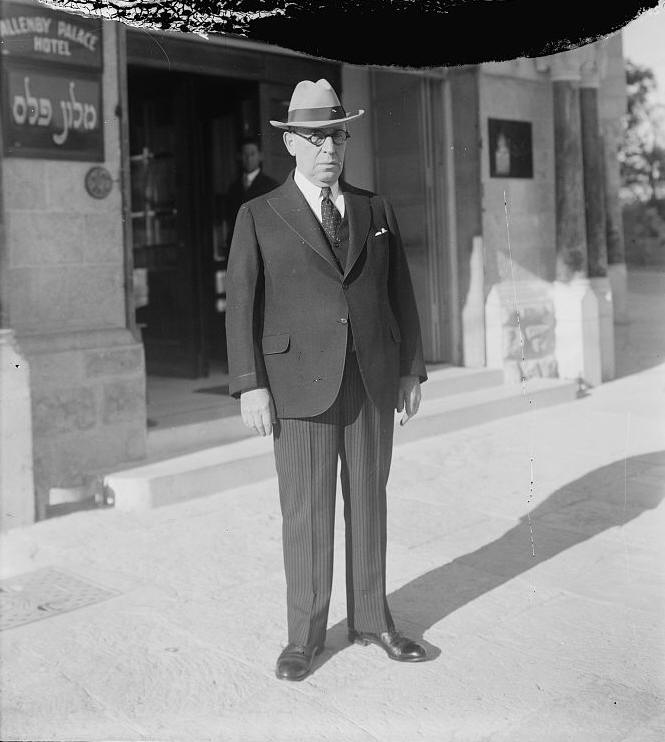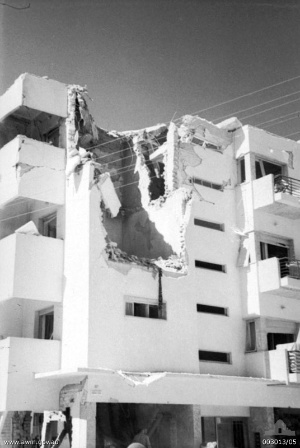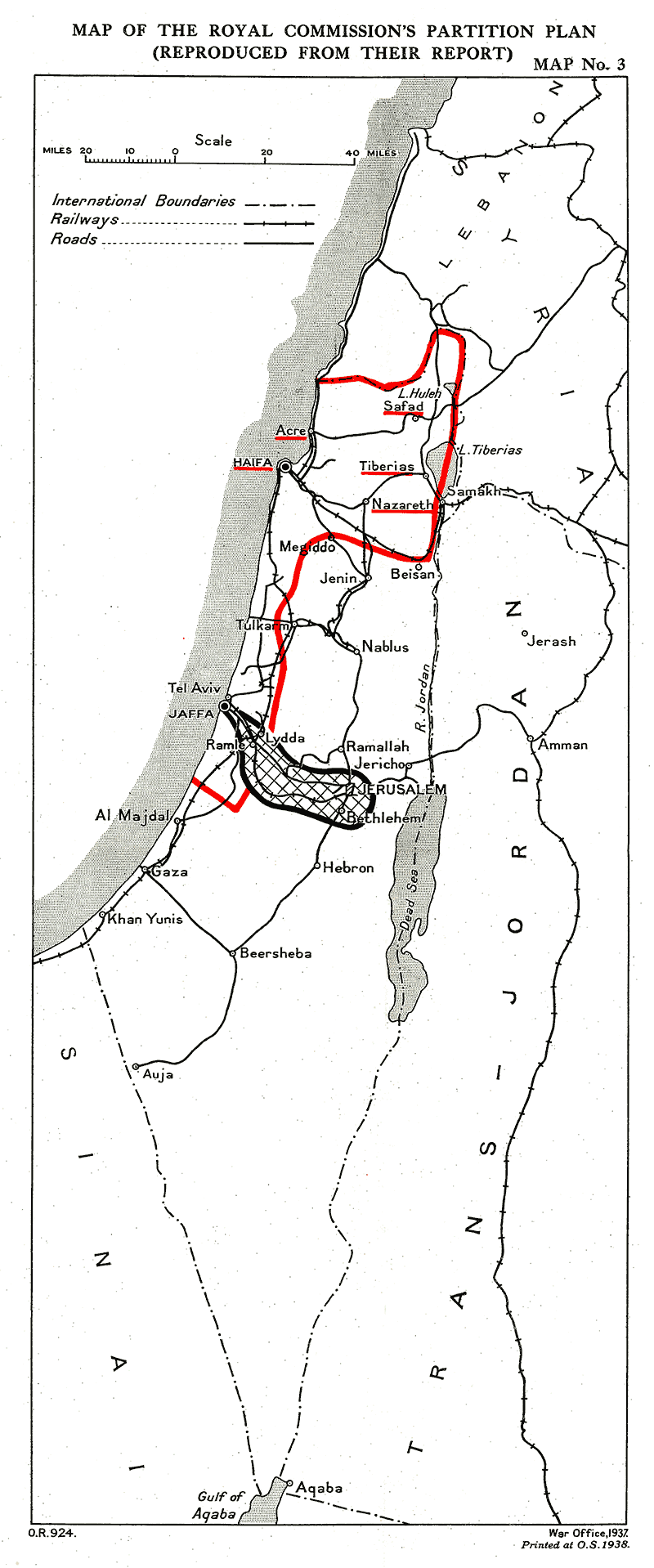|
Israeli Casualties Of War
Israeli casualties of war, in addition to those of Israel's nine major wars, include soldiers and security forces personnel killed in "miscellaneous engagements and terrorist attacks", which includes security forces members killed during military operations, by fighting crime, natural disasters, diseases, traffic or labor accidents and disabled veterans whose disabilities contributed to their deaths. Between 1948 and 1997, 20,093 Israeli soldiers were killed in combat, 75,000 Israelis were wounded, and nearly 100,000 Israelis were considered disabled army veterans. On the other hand, in 2010 Yom HaZikaron, Israel honored the memory of 22,684 Israeli soldiers and people of the Yishuv killed since 1860 in the line of duty for the independence, preservation and protection of the nation, and 3,971 civilian terror victims. The memorial roll, in addition to IDF members deceased, also include fallen members of the Shin Bet security service, the Mossad intelligence service, the Israel ... [...More Info...] [...Related Items...] OR: [Wikipedia] [Google] [Baidu] |
Memorial Of Fallen Soldiers From The Yom Kippur War - Flickr - Israel Defense Forces
A memorial is an object or place which serves as a focus for the memory or the commemoration of something, usually an influential, deceased person or a historical, tragic event. Popular forms of memorials include landmark objects such as homes or other sites, or works of art such as sculptures, statues, fountains or parks. Larger memorials may be known as monuments. Types The most common type of memorial is the gravestone or the memorial plaque. Also common are war memorials commemorating those who have died in wars. Memorials in the form of a cross are called intending crosses. Online memorials are often created on websites and social media to allow digital access as an alternative to physical memorials which may not be feasible or easily accessible. When somebody has died, the family may request that a memorial gift (usually money) be given to a designated charity, or that a tree be planted in memory of the person. Those temporary or makeshift memorials are also called gras ... [...More Info...] [...Related Items...] OR: [Wikipedia] [Google] [Baidu] |
World War II
World War II or the Second World War (1 September 1939 – 2 September 1945) was a World war, global conflict between two coalitions: the Allies of World War II, Allies and the Axis powers. World War II by country, Nearly all of the world's countries participated, with many nations mobilising all resources in pursuit of total war. Tanks in World War II, Tanks and Air warfare of World War II, aircraft played major roles, enabling the strategic bombing of cities and delivery of the Atomic bombings of Hiroshima and Nagasaki, first and only nuclear weapons ever used in war. World War II is the List of wars by death toll, deadliest conflict in history, causing World War II casualties, the death of 70 to 85 million people, more than half of whom were civilians. Millions died in genocides, including the Holocaust, and by massacres, starvation, and disease. After the Allied victory, Allied-occupied Germany, Germany, Allied-occupied Austria, Austria, Occupation of Japan, Japan, a ... [...More Info...] [...Related Items...] OR: [Wikipedia] [Google] [Baidu] |
1929 Palestine Riots
The 1929 Palestine riots, Buraq Uprising (, ) or the Events of 1929 (, , ''lit.'' Events of 5689 Anno Mundi), was a series of demonstrations and riots in late August 1929 in which a longstanding dispute between Palestinian Arabs and Jews over access to the Western Wall in Jerusalem escalated into violence, which also involved the British authorities. Alongside this dispute, the uprising was also triggered by the refusal of Zionists to accept British offers of shared representation in Palestine which was accepted by Palestinian leadership. Dispossession of Palestinian tenants from land bought by the Jewish National Fund also contributed to the riots. The riots took the form, for the most part, of attacks by Arabs on Jews accompanied by destruction of Jewish property. During the week of riots, from 23 to 29 August, 133 Jews were killed by Arabs, and 339 Jews were injured, most of whom were unarmed. There were 116 Arabs killed and at least 232 wounded, mostly by the Mandate po ... [...More Info...] [...Related Items...] OR: [Wikipedia] [Google] [Baidu] |
Jaffa Riots
The Jaffa riots (commonly known in ) were a series of violent riots in Mandatory Palestine on May 1–7, 1921, which began as a confrontation between two Jewish groups but developed into an attack by Arabs on Jews and then reprisal attacks by Jews on Arabs. The rioting began in Jaffa and spread to other parts of the country. The riot resulted in the deaths of 47 Jews and 48 Arabs, with 146 Jews and 73 Arabs wounded.''Report of the Commission of Inquiry into the disturbances in Palestine in May, 1921'' with correspondence relating thereto (Disturbances), 1921, Cmd. 1540, p. 22 & 60. Events [...More Info...] [...Related Items...] OR: [Wikipedia] [Google] [Baidu] |
1920 Nebi Musa Riots
The 1920 Nebi Musa riots or 1920 Jerusalem riots took place in British-controlled part of Occupied Enemy Territory Administration between Sunday, 4 April, and Wednesday, 7 April 1920 in and around the Old City of Jerusalem. Five Jews were killed and several hundred injured; four Arabs were killed, and eighteen injured; seven Britons were injured. The riots coincided with and are named after the Nebi Musa festival, which was held every year on Easter Sunday, and followed rising tensions in Arab–Jewish relations. The events came shortly after the Battle of Tel Hai and the increasing pressure on Arab nationalists in Syria in the course of the Franco-Syrian War. Speeches were given by Arab religious leaders during the festival (in which large numbers of Muslims traditionally gathered for a religious procession), which included slogans referencing Zionist immigration and previous confrontations around outlying Jewish villages in the Galilee. The trigger which turned the processi ... [...More Info...] [...Related Items...] OR: [Wikipedia] [Google] [Baidu] |
Battle Of Tel Hai
The Battle of Tel Hai was fought on 1 March 1920 between Arab and Jewish forces at the village of Tel Hai in Northern Galilee. In the course of the event, a Shiite Arab militia, accompanied by Bedouin from a nearby village, entered a Jewish agricultural locality of Tel Hai in search of French soldiers. Confusion over the presence of the militias subsequently led to shots being fired and a firefight breaking out. In the aftermath of the fighting, eight Jews and five Arabs were killed. Joseph Trumpeldor, the commander of Jewish defenders of Tel Hai, was shot in the hand and stomach, and died while being evacuated to Kfar Giladi that evening. Tel Hai was eventually abandoned by the Jews and burned by the Arab militia. The event is perceived by some scholars as part of the Franco-Syrian War and by some as an outbreak of violence in the later developing intercommunal conflict in Mandatory Palestine. Background Tel Hai had been intermittently inhabited since 1905 and was perman ... [...More Info...] [...Related Items...] OR: [Wikipedia] [Google] [Baidu] |
Israeli Declaration Of Independence
The Israeli Declaration of Independence, formally the Declaration of the Establishment of the State of Israel (), was proclaimed on 14 May 1948 (5 Iyar 5708), at the end of the 1947–1948 civil war in Mandatory Palestine, civil war phase and beginning of the 1948 Arab–Israeli War, international phase of the 1948 Palestine war, by David Ben-Gurion, the Executive Head of the World Zionist Organization and Chairman of the Jewish Agency for Israel#Formation of the Jewish Agency for Palestine, Jewish Agency for Palestine. It declared the establishment of a Jewish state in Palestine (region), Palestine (or the Land of Israel in the Jewish tradition), to be known as the Israel, State of Israel, which would come into effect on End of the British Mandate for Palestine, termination of the Mandate for Palestine, British Mandate at midnight that day. The event is celebrated annually in Israel as Independence Day (Israel), Independence Day, a National day, national holiday on 5 Iyar of e ... [...More Info...] [...Related Items...] OR: [Wikipedia] [Google] [Baidu] |
Bombing Of Palestine In World War II
The Italian bombing of Mandatory Palestine in World War II was part of an effort by the Royal Italian Air Force (''Regia Aeronautica'') to strike at the United Kingdom by attacking those parts of the British Empire in the Middle East. Background On 10 June 1940, the Kingdom of Italy declared war on the French Republic and the United Kingdom. The Italian invasion of France was short-lived and the French signed an armistice with the Italians on 25 June, three days after France's armistice with Germany. This left the British and the forces of the Commonwealth of Nations for the Italians to contend with in the Middle East. Successively on 19 October 1940, four Italian SM.82s bombers attacked American-operated oil refineries in the British Protectorate of Bahrain, damaging the local refineries.Air Raid! A Sequel ... [...More Info...] [...Related Items...] OR: [Wikipedia] [Google] [Baidu] |
British–Zionist Conflict
The Jewish insurgency in Mandatory Palestine, known in the United Kingdom as the Palestine Emergency, was a paramilitary campaign carried out by Zionist militias and underground groups—including Haganah, Lehi, and Irgun—against British rule in Mandatory Palestine from 1944 to 1948. The tensions between the Zionist underground and the British mandatory authorities rose from 1938 and intensified with the publication of the White Paper of 1939. The Paper outlined new government policies to place further restrictions on Jewish immigration and land purchases, and declared the intention of giving independence to Palestine, with an Arab majority, within ten years. Though World War II brought relative calm, tensions again escalated into an armed struggle towards the end of the war, when it became clear that the Axis powers were close to defeat. The Haganah, the largest of the Jewish underground militias, which was under the control of the officially recognised Jewish leadership of ... [...More Info...] [...Related Items...] OR: [Wikipedia] [Google] [Baidu] |
Mandatory Palestine
Mandatory Palestine was a British Empire, British geopolitical entity that existed between 1920 and 1948 in the Palestine (region), region of Palestine, and after 1922, under the terms of the League of Nations's Mandate for Palestine. After an Arab Revolt, Arab uprising against the Ottoman Empire during the First World War in 1916, British Empire, British Egyptian Expeditionary Force, forces drove Ottoman Empire, Ottoman forces out of the Levant. The United Kingdom had agreed in the McMahon–Hussein Correspondence that it would honour Arab independence in case of a revolt but, in the end, the United Kingdom and French Third Republic, France divided what had been Ottoman Syria under the Sykes–Picot Agreement—an act of betrayal in the eyes of the Arabs. Another issue was the Balfour Declaration of 1917, in which Britain promised its support for the establishment of a Homeland for the Jewish people, Jewish "national home" in Palestine. Mandatory Palestine was then establishe ... [...More Info...] [...Related Items...] OR: [Wikipedia] [Google] [Baidu] |
Palestinian Political Violence
Palestinian political violence refers to acts of violence or terrorism committed by Palestinians with the intent to accomplish political goals in the context of the Israeli–Palestinian conflict. Common objectives of political violence by Palestinian groups include self-determination in and sovereignty over all of the region of Palestine (including seeking to replace Israel),de Waart, 1994p. 223. or the recognition of a Palestinian state inside the 1967 borders. This includes the objective of ending the Israeli occupation. More limited goals include the release of Palestinian prisoners held by Israel and recognition of the Palestinian right of return. Palestinian groups that have been involved in politically motivated violence include the Palestine Liberation Organization (PLO), Fatah, the Popular Front for the Liberation of Palestine (PFLP), the Popular Front for the Liberation of Palestine – General Command (PFLP-GC), the Democratic Front for the Liberation of Pal ... [...More Info...] [...Related Items...] OR: [Wikipedia] [Google] [Baidu] |
Second Intifada
The Second Intifada (; ), also known as the Al-Aqsa Intifada, was a major uprising by Palestinians against Israel and its Israeli-occupied territories, occupation from 2000. Starting as a civilian uprising in Jerusalem and October 2000 protests in Israel, Israel proper, Israeli security responded with extreme violence, killing over 100 Palestinian protesters within the first few weeks. This led to the uprising devolving into a period of heightened violence in Palestine and Israel. This violence, including shooting attacks, suicide bombings, and military operations continued until the Sharm El Sheikh Summit of 2005, Sharm el-Sheikh Summit of 2005, which ended hostilities. The general triggers for the unrest are speculated to have been centered on the failure of the 2000 Camp David Summit, which was expected to reach a final agreement on the Israeli–Palestinian peace process in July 2000. An uptick in violent incidents started in September 2000, after Israeli politician Arie ... [...More Info...] [...Related Items...] OR: [Wikipedia] [Google] [Baidu] |










